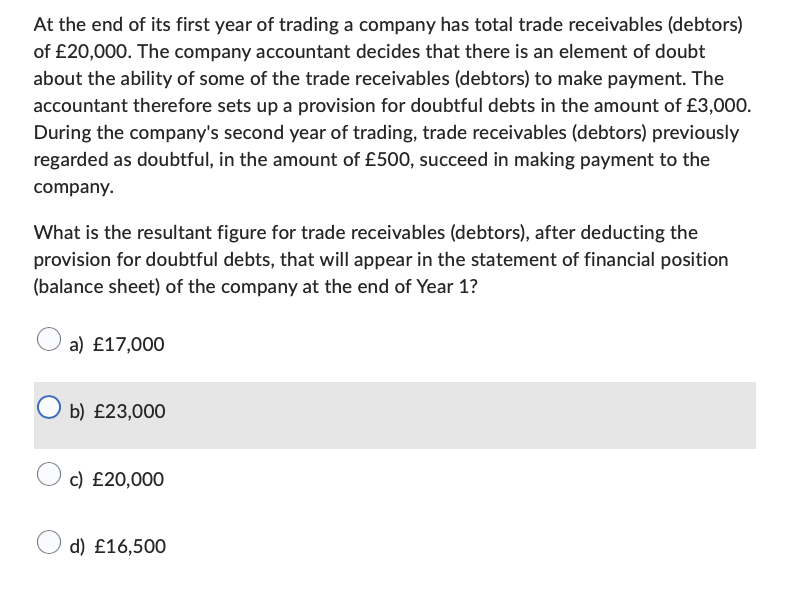At the end of its first year of trading a company has total trade receivables (debtors) of £20,000. The company accountant decides that there is an element of doubt about the ability of some of the trade receivables (debtors) to make payment. The accountant therefore sets up a provision for doubtful debts in the amount of £3,000 During the company's second year of trading, trade receivables (debtors) previously regarded as doubtful, in the amount of £500, succeed in making payment to the company. What is the resultant figure for trade receivables (debtors), after deducting the provision for doubtful debts, that will appear in the statement of financial position (balance sheet) of the company at the end of Year 1? a) £17,000 O b) £23,000 c) £20,000 d) £16,500
Bad Debts
At the end of the accounting period, a financial statement is prepared by every company, then at that time while preparing the financial statement, the company determines among its total receivable amount how much portion of receivables is collected by the company during that accounting period.
Accounts Receivable
The word “account receivable” means the payment is yet to be made for the work that is already done. Generally, each and every business sells its goods and services either in cash or in credit. So, when the goods are sold on credit account receivable arise which means the company is going to get the payment from its customer to whom the goods are sold on credit. Usually, the credit period may be for a very short period of time and in some rare cases it takes a year.

Step by step
Solved in 2 steps






